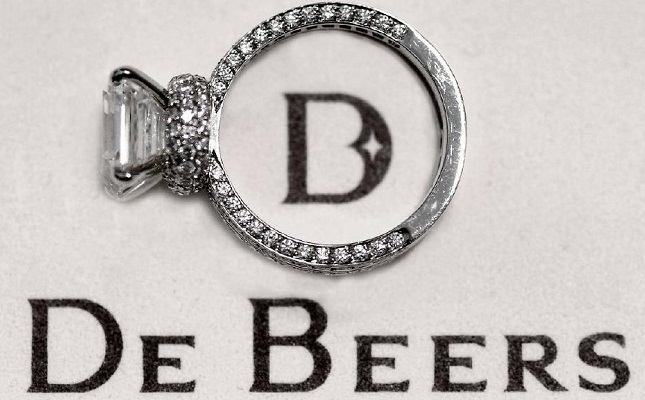De Beers: Output, Average Price Per Carat Up in 2018
January 24, 19
(IDEX Online) – De Beers reported that rough diamond sales volumes totaled 9.9 million carats (9.2 million carats on a consolidated basis) from three sales cycles, compared with 8.2 million carats (7.5 million carats on a consolidated basis) from the same number of sales cycles during the equivalent period in 2017.
Fourth quarter rough sales revenues increased year on year as the re-phased allocations of some lower value rough diamonds from Sight 7 (in September) were realized in Sights 9 and 10.
For the full year, rough diamond sales volumes were four percent lower at 33.7 million carats (31.6 million carats on a consolidated basis) compared with 35.1 million carats (33.1 million carats on a consolidated basis) in 2017. 2018 sales volumes were also lower than production, driven by lower demand for lower value rough diamonds in the second half of 2018.
The consolidated average realized price of $171/ct was six percent higher (2017: $162/ct), due to a lower proportion of lower value rough diamonds sold in 2018.
2019 Guidance
2019 production guidance is 31 to 33 million carats, subject to trading conditions. The lower production is driven by the process of exiting from the Venetia open pit with the underground becoming the principal source of ore from 2023. Associated with this, an increased proportion of production in 2019 is expected to come from De Beers Group’s joint venture partners, a proportion of which only generate a trading margin, which is lower than the mining margin generated from own mined production.
Rough diamond production increased 12 percent to 9.1 million carats in the fourth quarter, bringing total production for 2018 to 35.3 million carats although this was in the lower half of the production guidance range of 35 to 36 million carats.
Production increased by 15 percent to 6.3 million carats in Botswana. Orapa mine production increased 20 percent to 3.6 million carats, driven by planned favorable grade and higher plant utilization, the miner said. Jwaneng production increased nine percent following an increase in tonnes treated.
In Namibia, production increased three percent to 505,000 carats, driven by the Mafuta crawler vessel at Debmarine Namibia spending fewer days in port. This was partly offset by the land operations following the transition of Elizabeth Bay to care and maintenance.
Meanwhile, in South Africa, production increased seven percent to 1.2 million carats as a result of planned higher grade ore at Venetia.
In Canada, output increased five percent to 1.0 million carats due to higher grades at Victor as it reaches the end of its life. This was partially offset by planned lower grades at Gahcho Kué.